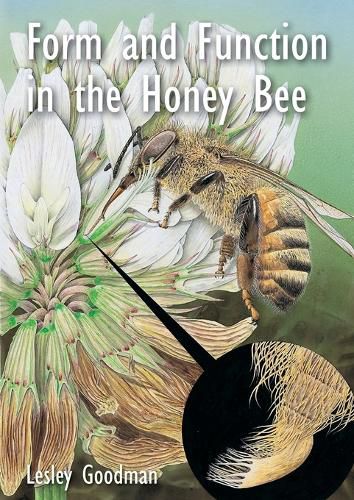Readings Newsletter
Become a Readings Member to make your shopping experience even easier.
Sign in or sign up for free!
You’re not far away from qualifying for FREE standard shipping within Australia
You’ve qualified for FREE standard shipping within Australia
The cart is loading…






This title is printed to order. This book may have been self-published. If so, we cannot guarantee the quality of the content. In the main most books will have gone through the editing process however some may not. We therefore suggest that you be aware of this before ordering this book. If in doubt check either the author or publisher’s details as we are unable to accept any returns unless they are faulty. Please contact us if you have any questions.
When Dr Lesley Goodman finally lost her fight against lung cancer in 1998, she left behind her vision for an accessible, authoritative reference work for bee scientists, undergraduates and beekeepers. Form and Function in the Honey Bee is the fruition of her work - a posthumous tribute to her life and interests. Containing over 340 diagrams, micrographs and colour illustrations, Form and Function works equally well as an expert guide to the physiology and anatomy of the honey bee, and as an introduction to this fascinating field for students and others. The chapters take the reader through the major structures and activities of the honey bee - the antennae, compound eyes, dorsal ocelli, the bee’s response to gravity, feeding, respiration, flight, glands and colony defence are all examined in detail to give the reader a comprehensive understanding of how and why the honey bee behaves as it does. The book has been completed posthumously by Prof. Richard J Cooter, Chair of the L J Goodman Insect Physiology Trust, and Dr Pamela Munn, Deputy Director of the International Bee Research Association.
Chapters1. The antennal sense organs: smelling, tasting, touching and hearing in the bee2. Vision in the bee: the compound eye3. The dorsal ocelli: the bee’s second set of eyes4. The bee’s response to gravity: which way is up?5. Feeding: 1. Using the mouthparts2. Tasting the food3. Collecting the pollen6. Respiration: how do bees breathe?7. Flight: wings, aerodynamics, sensory control and metabolism8. Glands: chemical communication and wax production9. Defending the colony: the sting
$9.00 standard shipping within Australia
FREE standard shipping within Australia for orders over $100.00
Express & International shipping calculated at checkout
This title is printed to order. This book may have been self-published. If so, we cannot guarantee the quality of the content. In the main most books will have gone through the editing process however some may not. We therefore suggest that you be aware of this before ordering this book. If in doubt check either the author or publisher’s details as we are unable to accept any returns unless they are faulty. Please contact us if you have any questions.
When Dr Lesley Goodman finally lost her fight against lung cancer in 1998, she left behind her vision for an accessible, authoritative reference work for bee scientists, undergraduates and beekeepers. Form and Function in the Honey Bee is the fruition of her work - a posthumous tribute to her life and interests. Containing over 340 diagrams, micrographs and colour illustrations, Form and Function works equally well as an expert guide to the physiology and anatomy of the honey bee, and as an introduction to this fascinating field for students and others. The chapters take the reader through the major structures and activities of the honey bee - the antennae, compound eyes, dorsal ocelli, the bee’s response to gravity, feeding, respiration, flight, glands and colony defence are all examined in detail to give the reader a comprehensive understanding of how and why the honey bee behaves as it does. The book has been completed posthumously by Prof. Richard J Cooter, Chair of the L J Goodman Insect Physiology Trust, and Dr Pamela Munn, Deputy Director of the International Bee Research Association.
Chapters1. The antennal sense organs: smelling, tasting, touching and hearing in the bee2. Vision in the bee: the compound eye3. The dorsal ocelli: the bee’s second set of eyes4. The bee’s response to gravity: which way is up?5. Feeding: 1. Using the mouthparts2. Tasting the food3. Collecting the pollen6. Respiration: how do bees breathe?7. Flight: wings, aerodynamics, sensory control and metabolism8. Glands: chemical communication and wax production9. Defending the colony: the sting